CALL US NOW!
+91-213-666-0027
CALL US NOW!
+91-213-666-0027
Discovering Small Inground Pool Costs in 2024
- Home
- Discovering Small Inground Pool Costs in 2024
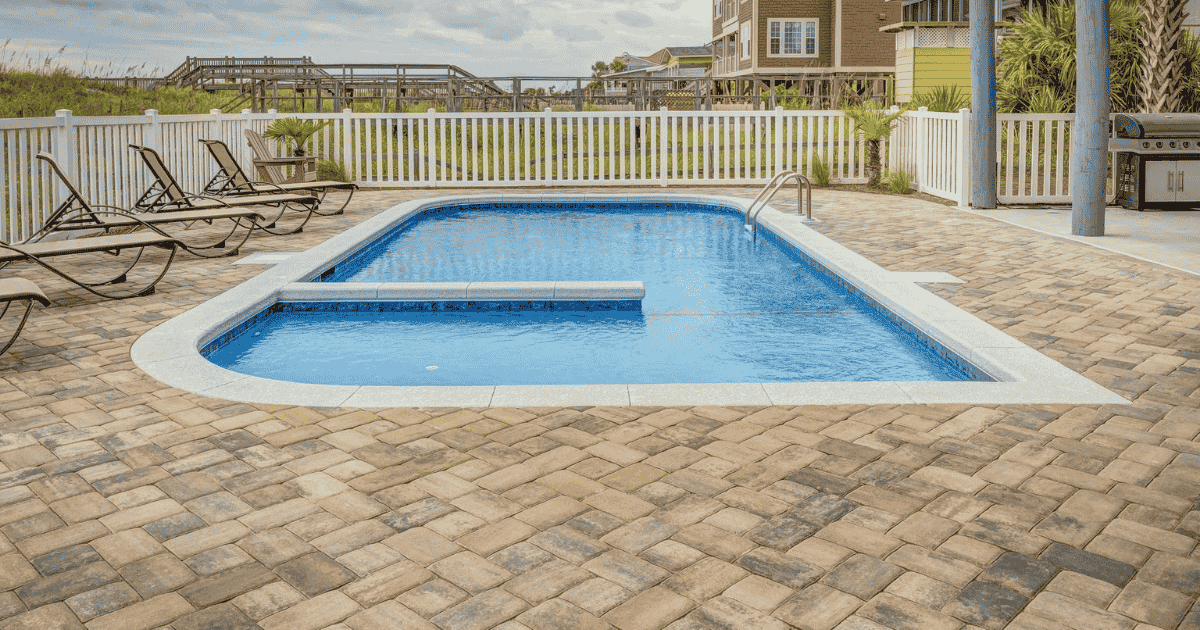
Many homeowners are creating special backyards oasis with small inground pools. These pools provide a refreshing break from the summer heat and can also improve the look of your home.
Before getting a pool, it’s important to know the costs involved. This blog will help you understand the expenses of small inground pools so you can make a smart choice.
Why Small Inground Pools Are Popular
Small inground swimming pools are a popular choice for homeowners. They balance luxury and cost. These pools are smaller than larger ones, so they fit well in tight spaces.
This makes them great for city homes and small yards. People like them because they can be used for many things and create a relaxing retreat at home.
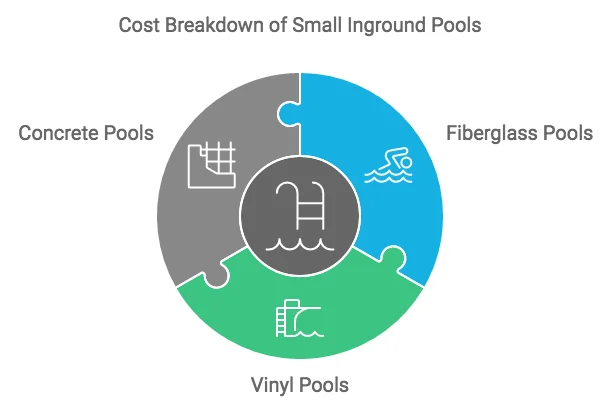
Before you install a small pool, it’s crucial to know the costs. Affordable inground pools can vary based on pool design, materials, and extra features. Understanding these costs helps pool owners plan better and avoid surprises.
Table of Contents
Types of Small Inground Pools
Homeowners can choose from different designs and materials for small ground pools. Whether you prefer a modern look or a classic style, there are many options to fit your taste.
Vinyl Liner Pools
Vinyl liner pools are popular because they are affordable and easy to install. These pools have a flexible vinyl liner that can fit different shapes and sizes. The liner resists algae and is easy to clean(green pool).
However, vinyl pools may need a new liner replacement every 7 to 10 years, which adds to the cost. They can also tear or puncture easily, so handle them carefully.
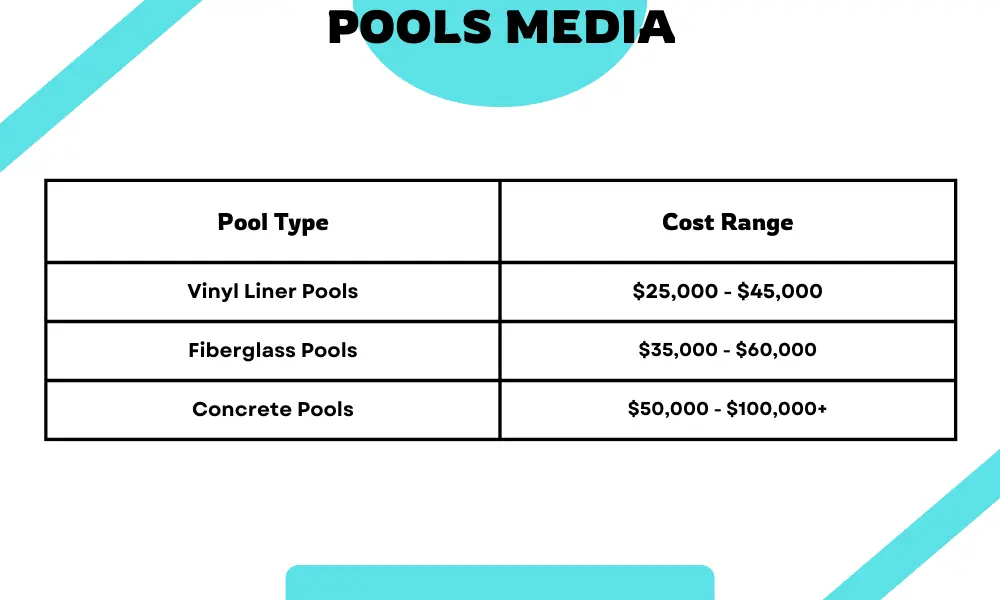
Fiberglass Pools
Fiberglass pools are known for being strong and low maintenance. They are made in a factory and then installed at your home. This speeds up the installation process. The smooth surface resists algae and stains, making cleaning easy. Rea here Fiberglass pool problems and solutions.
Fiberglass pools often cost more upfront than vinyl ones. They may have fewer design options. But their durability can make them worth the investment.
Concrete Pools
Concrete pools offer a lot of customization. You can shape them to fit any backyard and choose different finishes. This gives you a personal touch.
Concrete pools are very strong and can last for many years. They can handle tough weather and heavy use. Builders make them on-site, allowing endless design possibilities.
However, using concrete can harm the environment. Making concrete releases a lot of carbon dioxide, which contributes to pollution. We must balance using concrete with caring for the environment.
Concrete pools are more expensive and take longer to install. They need regular maintenance, like resurfacing, to prevent damage. Despite these challenges, many people love the classic look of concrete pools.
Factors Affecting Small Inground Pool Prices
Many things influence small pool installation cost. Understanding these factors can help you with your small pool budget.
Installation Expenses
Labor costs are a main part of the total expense. Hiring skilled workers for excavation, plumbing, and electrical work ensures a smooth project. Preparing the site is also important for a strong foundation.
The complexity of the installation and site access can change costs. Properties with difficult terrain may need extra equipment, which adds to the total price.
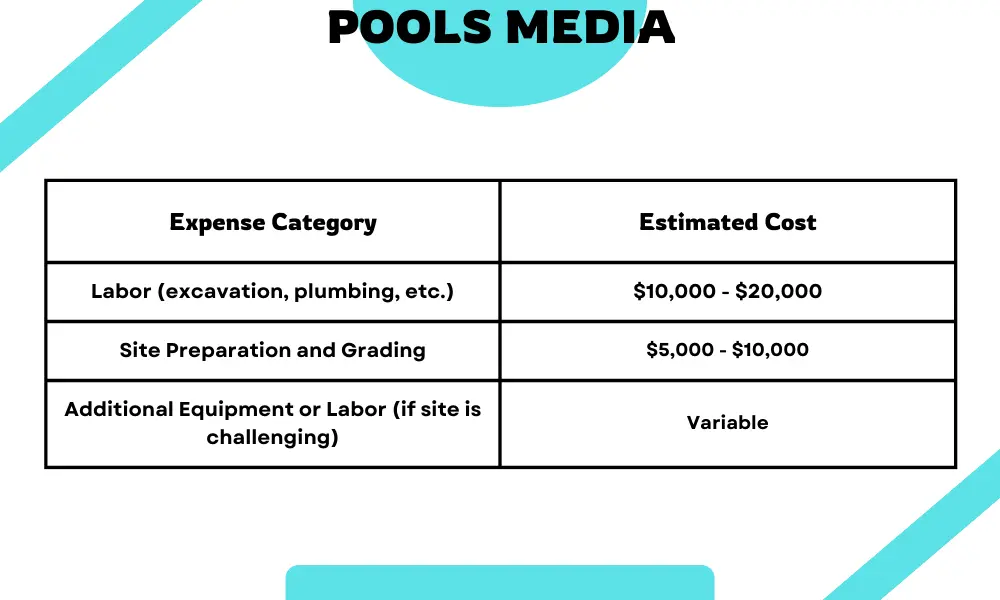
Size and Location
The pool size directly affects its upfront cost. Smaller pools usually cost less for materials and labor. Also, where you live can impact prices due to local differences in costs.
Climate and soil conditions can also affect pricing. Areas with extreme weather might need extra measures to keep the pool safe and lasting.
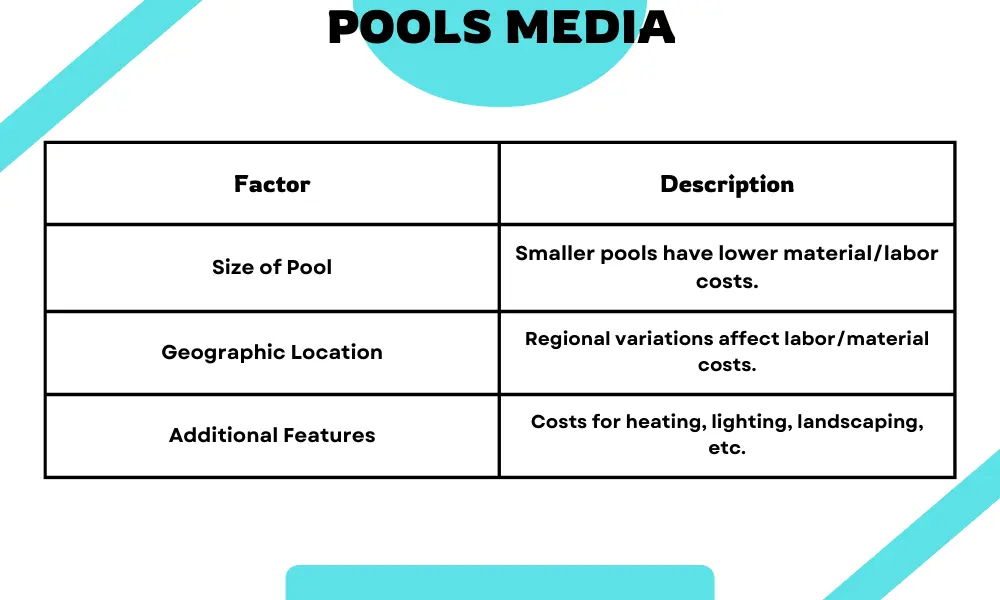
Additional Features
You can make your small pool better with extra features. Consider adding accessories like heating for comfort, safety options for kids, and lighting for night use. Slides can add fun, and landscaping can improve the look.
However, remember to include these costs in your budget. Heated pools may have higher energy costs, and landscaping/decking involves design and upkeep expenses.
Average Costs in 2024
Knowing the average prices for different types of pools helps you understand the financial commitment. Here are the typical price ranges:
- Vinyl Liner Pools: $25,000 to $45,000
- Fiberglass Pools: $35,000 to $60,000
- Concrete Pools: $50,000 to $100,000 or more
These prices can vary based on location and features. Get detailed quotes from trusted pool builders for better budgeting.
Cost Summary
On average, small inground pool cost between $30,000 and $80,000. While initial costs vary, ongoing pool maintenance and operating costs are also important. Regular upkeep, like cleaning and chemical treatments(saltwater)(chlorine), keeps the pool in good shape. Budgeting for these expenses early can prevent unexpected costs later.
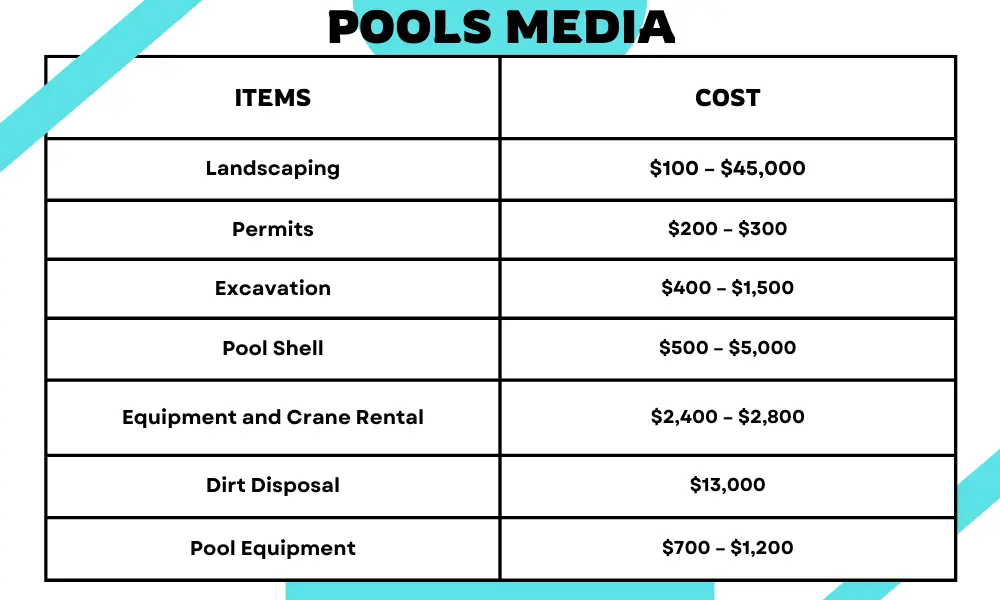
DIY vs. Professional Installation
Homeowners often wonder if they should install a small pool themselves or hire a pro. Each choice has its own pros and cons.
DIY Installation Costs
Choosing a DIY installation can save on labor costs. Homeowners with construction skills may like this option. However, pool installation is complex, involving excavation, plumbing, and electrical work. Mistakes can lead to expensive repairs and delays.
Getting permits and meeting local codes can also be tricky without professional help.
Benefits of Hiring a Professional
Hiring a professional contractor ensures a smooth installation. Experts know how to handle all project aspects, from design to completion. They can offer helpful advice to improve the pool’s look and function.
Many contractors provide warranties, giving you peace of mind. While hiring a pro may cost more initially, the quality and reduced risk often make it worth it.
Choosing Between DIY and Professional Work
When deciding, think about your skills and time. Assess the installation’s complexity and any site challenges. If you want a stress-free process, hiring a good contractor is usually the best choice. But if you have the right skills and tools, a DIY approach can be rewarding.
Evaluating Return on Investment (ROI)
Investing in a small inground pool can bring fun and long-term benefits. Understanding the potential return on investment helps homeowners decide wisely.
Increasing Property Value
A well-made inground pool can boost a home’s value and attract buyers. In warm areas, Plunge pools are often seen as a great feature, increasing property value.
The value increase can vary by location and market trends, but a nice pool can offer good ROI.
Long-Term Savings vs. Initial Costs
While installing a small inground pool may seem expensive, it can save money long-term. Homeowners can enjoy staycations and avoid pricey community pool fees.
Balancing these long-term benefits with the initial costs helps determine the pool’s true value.
Exploring Financing Options
Financing makes pool ownership possible for more homeowners. Knowing your financing options helps you make smart financial choices.
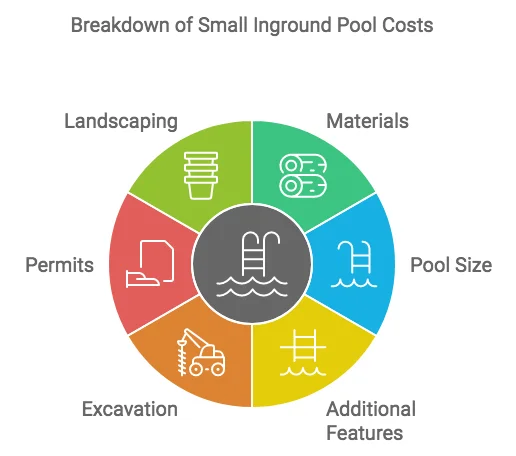
Insights on Financing for Homeowners
Homeowners can look into personal loans, home equity loans, and pool financing programs. Each option has different terms, interest rates, and repayment plans. Researching helps you find the best fit for your needs.
Making Smart Choices
Before buying a small or semi inground pool, gather information, seek expert advice, and weigh pros and cons. Understanding costs, installation options, and potential ROI empowers homeowners to make confident choices.
Conclusion
Investing in a small inground pool can bring endless joy and improve your home’s appeal. By learning about costs and financing options, homeowners can create their backyard paradise. Remember to consider installation choices and maintenance needs. These steps ensure you make the best decision for your family and budget.
Frequently Asked Questions (FAQs)
How much does it usually cost to install a small inground pool?
The cost for a small inground pool can vary a lot. It usually ranges from $20,000 to $50,000. The final price depends on factors like size, materials, extra water features, and where you live. It’s a good idea to get quotes from several contractors to understand your costs better.
How long does it take to complete the installation?
Installing an inground pool can take about 4 to 12 weeks. This time can change based on weather, how complicated the design is, getting permits, and any unexpected problems that come up during the build.
How can homeowners lower their maintenance costs for inground pools?
To save on maintenance, homeowners can clean the pool regularly, keep the right chemical balance, check equipment often, and fix small problems quickly. Buying energy-efficient pool equipment and using a pool cover can also help reduce costs.
Do small inground pools need a permit?
Yes, installing an inground pool usually requires a building permit. The rules for getting a permit can be different depending on where you live, so it’s best to check with your local building department.
What types of financing options are available for inground pool installation?
Homeowners have several financing options, like personal loans, home equity loans, and special plans from pool companies. Each option may have different interest rates and payment terms, so it’s wise to compare them before deciding.
